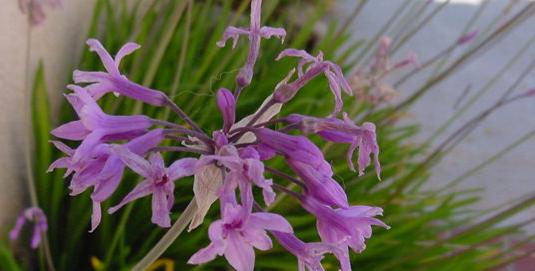Tulbaghia Violacea one of the members of the Amaryllidaceae perennial flowers family. When its rootstock and leaves are bruised it smells just like garlic. Due to this reason, this flower is commonly known as wild garlic. These flowers can tolerate heat. When its growing season begins these flowers thrives to grow inadequate moisture. These spring bulbs are ideal for herbaceous gardens. And are also planted near edges and borders. Sweet garlic’s are also considered a salt-tolerant flowering plant.
Flavours:Wild garlic’s has unique and delicious favour of peppery to onions. its Also used to eat.
Scientific Name: Tulbaghia Violacea is the scientific name of wild garlic.
Common Names: There are some other interesting names for these flowers such as
- Spring flowers
- Sweet garlic
- Wild garlic
- Society garlic
Family: Its family name is Amaryllidaceae
Subfamily: Allioideae is its subfamily.
Genus: Tulbaghia
Species: T. violacea
Origin: Originated in South Africa
Plant Type:Tulbaghia is a perennial and edible flower that can cover the garden flawlessly.
Habit/Form:These flowers spread through climbing.
Growth Rate:The growth rate of these flowers is generally normal.
Maintenance:Moreover, these flowers do not require extra care.
Light:Every day 6 to 8 hours of sunlight is enough for healthy growth.
Flower Color:Flowers grow in two attractive colours Purple or lavender and punk.
Flower Inflorescence: The inflorescence of these flowers is in umbel shape.
Value of these flowers: These flowers can add beauty to the gardens.
Blooming Time: Sweet garlic grows from spring to summer.
Flower Shape:The shape of the flower is just like a little star.
Petals:Each flower contains5-6 petals.
Frequently Asked Question:
Are these flowers good to eat?
These flowers frequently used in salads, sauces and souls.
Which season is ideal to grow Wild garlic?
The ideal time to grow these flowers range from July till September.
Alternative:
Linnea Grandiflora.

